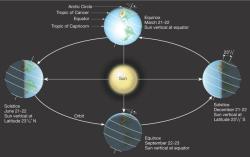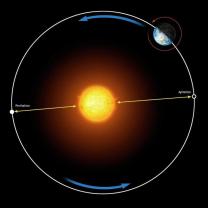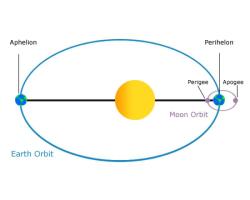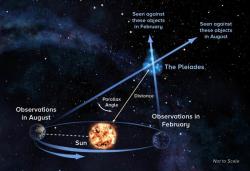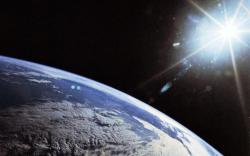What day of the month do solstices and equinoxes occur?
Solstices and equinoxes occur at specific times each year, and the dates can vary slightly from year to year due to the irregular length of our calendar year. However, they generally occur on or around the following dates:
Winter Solstice: Occurs around December 21st or 22nd in the Northern Hemisphere. In the Southern Hemisphere, this is the Summer Solstice and occurs around December 21st or 22nd. It marks the shortest day (longest night) in the Northern Hemisphere and the longest day (shortest night) in the Southern Hemisphere.
Spring Equinox (Vernal Equinox): Occurs around March 20th or 21st in the Northern Hemisphere. In the Southern Hemisphere, this is the Autumnal Equinox and occurs around March 20th or 21st. On this day, day and night are approximately of equal length.
Summer Solstice: Occurs around June 20th or 21st in the Northern Hemisphere. In the Southern Hemisphere, this is the Winter Solstice and occurs around June 20th or 21st. It marks the longest day (shortest night) in the Northern Hemisphere and the shortest day (longest night) in the Southern Hemisphere.
Autumn Equinox (Autumnal Equinox): Occurs around September 22nd or 23rd in the Northern Hemisphere. In the Southern Hemisphere, this is the Spring Equinox and occurs around September 22nd or 23rd. Similar to the spring equinox, day and night are approximately of equal length.
Keep in mind that these dates are approximate, and the exact date and time can vary slightly each year. They are determined by astronomical calculations related to the Earth's orbit around the Sun. To find the exact dates and times for a specific year, you may want to consult an astronomical calendar or website that provides this information.
The Specific Dates of Solstices and Equinoxes Each Year
Here is a table of the specific dates of solstices and equinoxes each year, for the years 2023-2026:
| Year | Vernal equinox | Summer solstice | Autumnal equinox | Winter solstice |
|---|---|---|---|---|
| 2023 | March 20 | June 21 | September 23 | December 21 |
| 2024 | March 19 | June 20 | September 22 | December 21 |
| 2025 | March 20 | June 21 | September 23 | December 22 |
| 2026 | March 20 | June 20 | September 22 | December 21 |
Understanding the Timing of Solstices and Equinoxes
The solstices and equinoxes occur each year because of the Earth's tilted axis and its orbit around the Sun.
A solstice occurs when the Earth's tilt is at its maximum, either towards or away from the Sun. This means that one hemisphere of the Earth is tilted more towards the Sun, receiving more sunlight and longer days, while the other hemisphere is tilted away from the Sun, receiving less sunlight and shorter days.
An equinox occurs when the Earth's axis is tilted neither towards nor away from the Sun. This means that both hemispheres of the Earth receive equal amounts of sunlight and have equal day and night.
The Astronomical and Meteorological Significance of These Dates
The solstices and equinoxes are significant astronomical events because they mark the beginning of each season.
The vernal equinox marks the beginning of spring, the summer solstice marks the beginning of summer, the autumnal equinox marks the beginning of fall, and the winter solstice marks the beginning of winter.
The solstices and equinoxes are also significant meteorological events because they mark the longest and shortest days of the year, as well as the days when day and night are equal in length.
Celebrations and Traditions Linked to Solstices and Equinoxes
Many cultures around the world have celebrations and traditions linked to the solstices and equinoxes. These celebrations and traditions often reflect the changing of the seasons and the importance of agriculture and fertility.
Some examples of celebrations and traditions linked to the solstices and equinoxes include:
- Vernal equinox: Ostara, Nowruz, Holi, Passover, Easter
- Summer solstice: Litha, Midsummer, Inti Raymi
- Autumnal equinox: Mabon, Harvest Moon, Sukkot
- Winter solstice: Yule, Christmas, Hanukkah
Planning Events and Activities Around These Key Dates
Many people enjoy planning events and activities around the solstices and equinoxes. These events and activities can be a fun way to celebrate the changing of the seasons and to connect with nature.
Some ideas for events and activities that can be planned around the solstices and equinoxes include:
- Vernal equinox: Plant a garden, have an egg hunt, go for a nature walk
- Summer solstice: Go camping, have a barbecue, go swimming
- Autumnal equinox: Go apple picking, have a harvest festival, go for a hike
- Winter solstice: Go sledding, build a snowman, have a bonfire
No matter how you choose to celebrate, the solstices and equinoxes are a special time of year to reflect on the natural world and to be grateful for the Earth's bounty.


